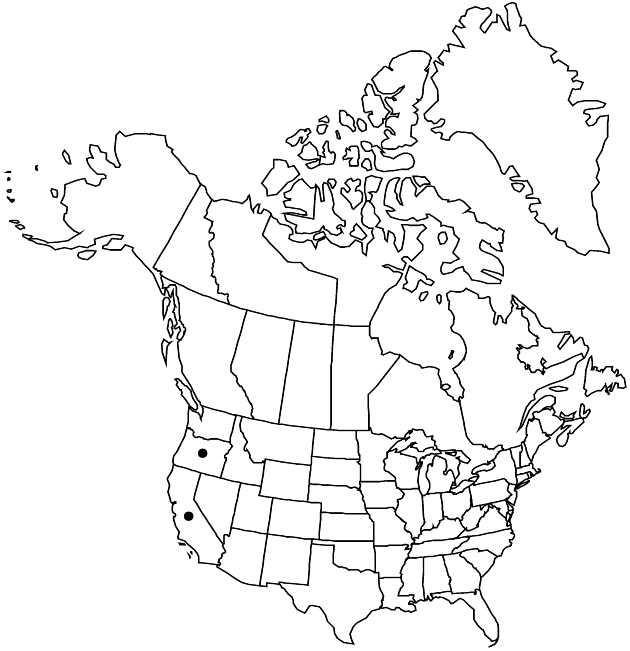Difference between revisions of "Hesperevax sparsiflora"
Fl. Francisc., 402. 1897.
FNA>Volume Importer |
RevisionBot (talk | contribs) m (Bot: Adding category Revised Since Print) |
||
| (3 intermediate revisions by 2 users not shown) | |||
| Line 8: | Line 8: | ||
}} | }} | ||
|common_names=Erect evax | |common_names=Erect evax | ||
| + | |special_status={{Treatment/ID/Special_status | ||
| + | |code=F | ||
| + | |label=Illustrated | ||
| + | }}{{Treatment/ID/Special_status | ||
| + | |code=E | ||
| + | |label=Endemic | ||
| + | }} | ||
|basionyms={{Treatment/ID/Basionym | |basionyms={{Treatment/ID/Basionym | ||
|name=Evax caulescens var. sparsiflora | |name=Evax caulescens var. sparsiflora | ||
| Line 30: | Line 37: | ||
-->{{Treatment/Body | -->{{Treatment/Body | ||
| − | |distribution= | + | |distribution=Calif.;Oreg. |
|discussion=<p>Varieties 2 (2 in the flora).</p><!-- | |discussion=<p>Varieties 2 (2 in the flora).</p><!-- | ||
--><p>The varieties of <i>Hesperevax sparsiflora</i> occur in distinct habitats and might be treated as separate species but for some morphologically intermediate specimens from areas of sympatry in the San Francisco Bay area.</p> | --><p>The varieties of <i>Hesperevax sparsiflora</i> occur in distinct habitats and might be treated as separate species but for some morphologically intermediate specimens from areas of sympatry in the San Francisco Bay area.</p> | ||
| Line 61: | Line 68: | ||
|basionyms=Evax caulescens var. sparsiflora | |basionyms=Evax caulescens var. sparsiflora | ||
|family=Asteraceae | |family=Asteraceae | ||
| − | |distribution= | + | |distribution=Calif.;Oreg. |
|reference=None | |reference=None | ||
|publication title=Fl. Francisc., | |publication title=Fl. Francisc., | ||
|publication year=1897 | |publication year=1897 | ||
| − | |special status= | + | |special status=Illustrated;Endemic |
| − | |source xml=https:// | + | |source xml=https://bitbucket.org/aafc-mbb/fna-data-curation/src/2e0870ddd59836b60bcf96646a41e87ea5a5943a/coarse_grained_fna_xml/V19-20-21/V19_780.xml |
|tribe=Asteraceae tribe Gnaphalieae | |tribe=Asteraceae tribe Gnaphalieae | ||
|genus=Hesperevax | |genus=Hesperevax | ||
| Line 72: | Line 79: | ||
}}<!-- | }}<!-- | ||
| − | -->[[Category:Treatment]][[Category:Hesperevax]] | + | --> |
| + | |||
| + | [[Category:Treatment]] | ||
| + | [[Category:Hesperevax]] | ||
| + | [[Category:Revised Since Print]] | ||
Latest revision as of 18:31, 6 November 2020
Plants 2–17 cm. Stems 1–10, ascending to erect (rarely 0); branches 0 or proximal. Leaves mostly cauline, petiolate, distal scarcely congested, ± equal to proximal, largest 6–32 × 3–8(–10) mm; petioles: lengths 0.9–1.5 times blade lengths, bases thickened, cartilaginous to ± indurate; capitular leaves 1–4 per glomerule or head, approximate, not whorled, ascending to erect, some sometimes grading into pistillate paleae (by reduction of blades, expansion of petiole bases). Heads terminal in loose glomerules (3–4 mm diam.) of 3–5 mixed with leaves and some borne singly in axils, cylindric, 3–4.5 × 1.5–2 mm, heights 1.8–2.5 times diams. Receptacles distinct, 1.4–1.8 × 0.2–0.4 mm. Pistillate paleae in 1–3 series, spirally ranked, oblanceolate, 2.5–4.5 mm. Staminate paleae not or scarcely surpassing pistillate, 1.1–1.8 mm, lengths 0.3–0.4 times head heights; apices ± erect. Functionally staminate florets 2–5; corollas 0.8–1.1 mm. Cypselae mostly 1–1.7 mm.
Distribution

Calif., Oreg.
Discussion
Varieties 2 (2 in the flora).
The varieties of Hesperevax sparsiflora occur in distinct habitats and might be treated as separate species but for some morphologically intermediate specimens from areas of sympatry in the San Francisco Bay area.
Selected References
None.
Key
| 1 | Largest leaves (10–)13–32 × 4–8(–10) mm, blades broadly oblanceolate to obovate, arachnoid-seri- ceous | Hesperevax sparsiflora var. sparsiflora |
| 1 | Largest leaves 6–12(–14) × 3–5(–6) mm, blades ± round, ± densely lanuginose | Hesperevax sparsiflora var. brevifolia |